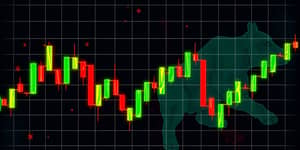
Commodity markets form the backbone of the world economy, where raw materials such as metals, energy products, agricultural goods, and livestock are traded daily. Understanding these markets requires a deep dive into the forces of supply and demand that set prices, dictate volatility, and influence global trade patterns. This comprehensive guide explores every facet of precise and comprehensive data analysis to empower investors, traders, and producers alike.
At their core, commodity markets are venues—either physical exchanges or electronic platforms—where primary goods are bought and sold. These goods include metals like copper and gold, energy resources such as crude oil and natural gas, agricultural products including wheat and soybeans, and livestock commodities like cattle and hogs.
The significance of these markets cannot be overstated. They provide essential price signals for producers and consumers, function as hedging instruments against inflation, and offer diversification opportunities for investors seeking exposure beyond equities and bonds. In essence, commodities act as both economic barometers and strategic investment assets.
Prices in commodity markets emerge from the intersection of supply and demand curves. When production equals consumption, the market attains an equilibrium price. However, most markets seldom rest at perfect equilibrium; instead, they exhibit sharp price movements in response to even minor shifts in either curve due to long-term elastic supply responses and inherent inelasticity in the short term.
Short-term price elasticity in commodities is often low, meaning small supply disruptions or surges in demand can lead to dramatic price volatility across markets. For example, a sudden frost in Brazil can send coffee futures soaring, while geopolitical tensions in the Middle East can ripple through oil prices worldwide.
Quantitative analysis in commodity markets centers on assembling and interpreting a myriad of data sources. Key elements include:
Beyond raw data, advanced econometric tools—like dynamic factor models—can decompose price movements into global, regional, and idiosyncratic factors. This layered view helps isolate fundamental drivers from noise and speculative pressures.
Supply-side variables also merit rigorous analysis. Weather patterns and climate change profoundly affect agricultural output, leading to weather-driven agricultural production disruptions. In the energy sector, drilling rates, OPEC decisions, geopolitical risks, and technological innovations in exploration or extraction shape supply availability. On the demand side, industrial growth trajectories, substitution effects (e.g., biofuels displacing oil), and seasonal consumption patterns offer critical insight into future requirements.
No analysis is complete without qualitative assessments and technical indicators. Qualitative methods involve monitoring news events, policy changes, and expert commentary. A sudden regulatory shift in mining royalties or a trade embargo can reconfigure supply expectations overnight.
Technical analysis complements fundamentals by capturing market sentiment and momentum. Widely used indicators include:
By integrating these tools, analysts can discern short-term price trajectories shaped by trader sentiment and market psychology.
Historical case studies illuminate how intertwined supply and demand dynamics can produce stark price swings. Below is a summary table illustrating critical commodity events and market impacts:
These examples underscore the necessity of real-time monitoring and agile response strategies, as even seasonal production and consumption cycles can reshape market fundamentals swiftly.
Effective forecasting combines quantitative supply-demand balances with qualitative foresight into geopolitical and regulatory uncertainties. The supply-demand balance equation—Total Supply minus Total Demand—serves as a baseline, but must be adjusted for unexpected events and emerging macro trends such as urbanization or energy transition policies.
Strategic decision-makers leverage these forecasts to:
The integration of dynamic global trade flows and geopolitical and regulatory shifts into forecasting models yields a more resilient planning framework for both corporates and investors.
Analyzing supply and demand dynamics in commodity markets demands a holistic approach. By weaving together rigorous quantitative models, qualitative intelligence, technical indicators, and real-world case studies, analysts can unlock deeper insights and anticipate price movements more accurately.
Developing robust commodity price models that incorporate weather forecasts, policy developments, and emerging industrial trends is vital. Armed with this knowledge, market participants—ranging from traders to multinational corporations—can make informed decisions that enhance resilience and capitalize on opportunities within these volatile yet rewarding markets.
References













